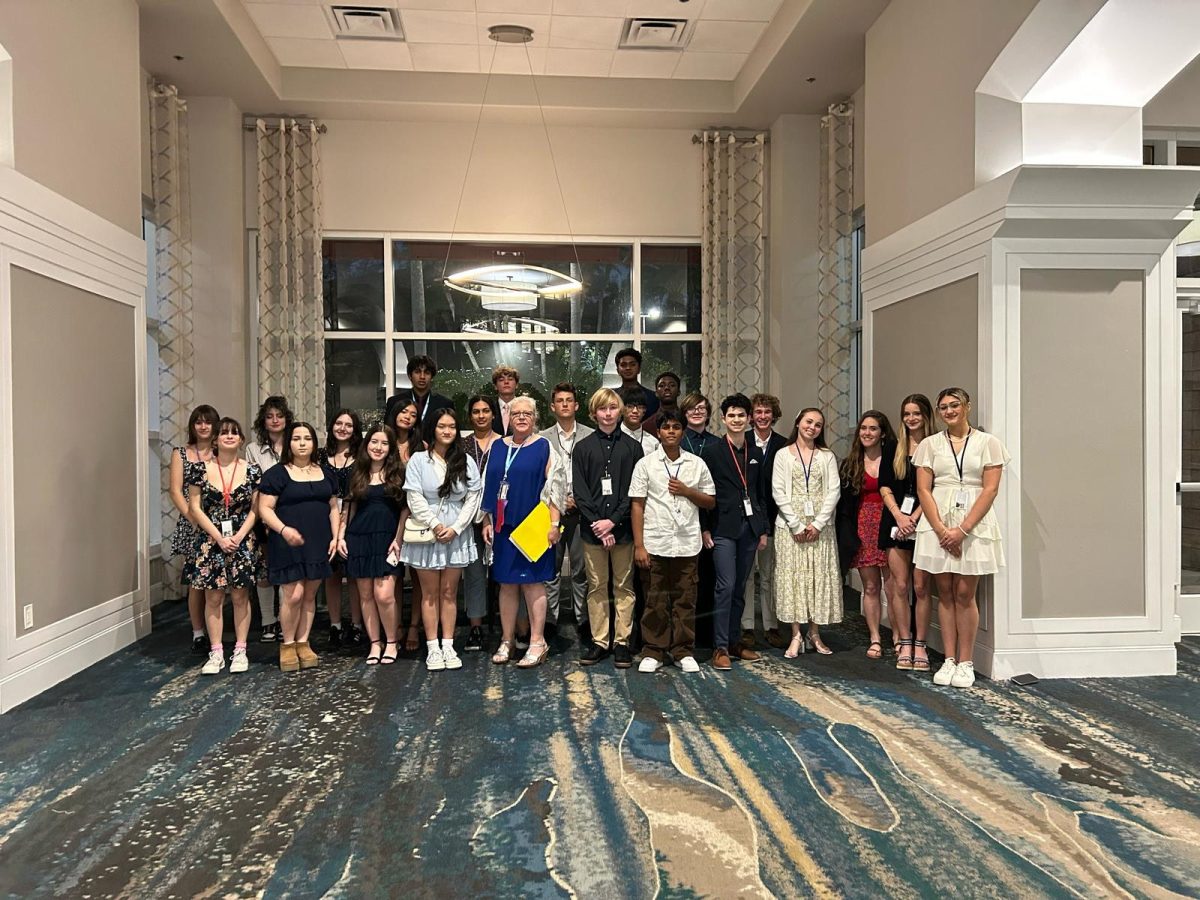Review: Taylor Swift reveals hidden depths with evermore
Swift’s latest surprise album evermore, released Dec. 11, tells a previously untold story.

Photo Universal Music Publishing Group
The album cover for evermore, Taylor Swift’s ninth album and the sister album to folklore.
December 17, 2020
Taylor Swift’s career has always felt like she was trying to prove a point. Fearless was to show that she was a real artist, not just some little girl. 1989 was to show that she could truly make pop music and that she wasn’t confined to one genre. Each album has felt like some grand statement of who she is, until along came Swift’s ninth album evermore, a gentle album that feels like a revisit to all the lives that were never lead.
This album isn’t Swift’s first exploration of stories, but folklore felt just like, well, folklore. It was very obviously a story—a good story—but it was fiction, made up. Evermore‘s warmth gives the album a nostalgic tone, like the shift into a warm color palette for a flashback to a childhood long past. The campfire story-like quality adds true emotion to Swift’s narrative, like all these stories are devastatingly real and she’s just giving the listener a glimpse into it.
“Ivy” tells the tale of a married woman involved in a love affair, through metaphors of life and death. “Champagne problems” tracks two ex-lovers who had very different plans for the night, one to propose and one to end it all. Despite the heaviness of the album, with nearly each track being tinged with a bitter melancholy, there’s an earnest hope within it that believes life will someday be better.
An aspect that added to the laid-back tone of the album was the general lack of overproduction that Swift sometimes stumbles into. “Willow,” the lead single, is alluring without being overwhelming, and “champagne problems” contrasts the emotional story with a delicate piano backing. Swift even returned to her country roots with “no body, no crime” and “cowboy like me,” two of the most addictive songs on the album. With each story she flits between genres, fitting herself into each one.
Swift is a woman who has quite literally published her diary pages before, with her 2019 album Lover. But, that honestly pales in comparison to evermore. Although many of the songs are clearly about a life that is not her own, each song is a confessional where she strips the characters bare.
The casual tone falls flat with the length of the album. Swift may be a talented songwriter, but when one releases 32 songs in a calendar year, some are bound to have been better suited to staying within Swift’s songbook. Tracks like “tolerate it” and “coney island” feel unnecessary, not really adding anything to the album that Swift hasn’t done better in the past.
There’s a sort of atmosphere around the album where it feels timeless until it’s abruptly modern. Take “dorothea,” an almost whimsical love song that could fit into any era, until the lyric “a tiny screen’s the only place I see you now,” or the reference to the recent comeback of 90’s trends with “willow.” Considering that this album is supposed to be an extension of folklore, it’s as if Swift took the mood of folklore bonus track “the lakes” and made it into an entire album.
Evermore may not be an altar to Swift’s talent, or some ambitious proclamation of art, but the quiet nature of it only deepens the emotional impact. With each listen it sinks in slowly until it hits all at once. Like a lullaby, the album will take you places you’ve only found in dreams.










